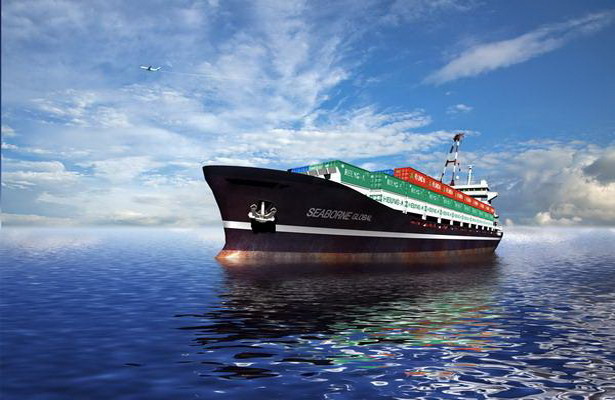Integrate global high-quality logistics and transportation resources to meet more personalized needs of domestic and foreign customers
The process of FBA's initial inbound logistics
What are the delivery methods for FBA's initial inbound logistics? Amazon has three shipping methods, as follows:
1、Fulfillment by Amazon(FBA)
The first step of FBA is Amazon logistics services, where the seller first sends the goods to the Amazon warehouse for storage, and then directly ships them from the Amazon warehouse after receiving the order. The entire process of selecting, packaging, and transporting products is operated by Amazon staff. Not only that, the platform also provides customer service and return services. Using this method for delivery has a faster delivery time and a better user experience for customers, which is equivalent to sharing the seller's workload. However, corresponding fees for warehouse usage must also be paid to Amazon.

2、Seller Fulfilled Prime(SFP)
Simply put, SFP refers to sellers building their own overseas warehouses or collaborating with third-party overseas warehouses. The logistics efficiency is similar to the FBA model. But certain regulations need to be met in order to be eligible to use SFP.
3、Fulfillment by Merchant(FBM)
FBM refers to the use of sellers' resources to ship goods to buyers. When the store has an order, the seller then sends the goods from China to abroad. This model does not require stocking or even having a source of goods, but the logistics time is relatively slow.
When selling products on the Amazon platform, except for a very few products that use self shipping, most sellers will use FBA to ship. Although FBA costs more than self shipping, the listing price of FBA shipped products is often much higher than that of self shipping, and using FBA is also an important factor in determining Amazon's product ranking. Below, we will explain in detail how to set up Amazon FBA first shipment?
Operation process
1. Enter the Amazon service page, click "Fulfillment by Amazon", fill in the company name in the pop-up page and check to indicate agreement to Amazon's relevant terms and agreements. Finally, select FBA service to successfully register.
2. Log in to the seller's backend and on the "Inventory" page, check the products to be shipped to the Amazon warehouse and select "Change Fulfillment by Amazon". These selected products will be smoothly converted to FBA Inventory
If the seller wants to let the buyer see your product during this period and the seller still has inventory domestically, they can convert it from FBA Inventory at that time. During the transfer process, it is also necessary to set the domestic inventory quantity of the product. However, when some sellers still do not have the converted listings on the inventory page, they use the product SKU to search in the background, which usually results in the search. At this time, sellers can set up domestic inventory.
3. Operate the FBA shipment process (Send/Repeat Inventory)
The first step is to Set Quantity, then enter the quantity of the shipped product under unit. If the packaging size of the product was not entered when uploading the product before, the seller also needs to fill in the packaging size of the product here. There are two types of Packaging Types: Individual products and Case packed products. Individual products are mixed packaging, which means different products are mixed and boxed. Case packed products are the same SKU of the same product packed in one box.
The second step is to Prepare Products. Amazon has a prompt on this page: the seller needs to ensure that the SKU and quantity of the physical item shipped are completely consistent with the one filled in at the time of creation. The seller needs to verify the SKU variety and quantity to ensure that they do not select or send the wrong product.
The third step is Label Products. It is important to note that the backend should allow sellers to choose whether to label on Amazon or on their own. If the seller chooses to label themselves, select "Merchant" under "who labels" and select the corresponding specification of label paper to print the label.
The fourth step is Review Shipments, where you can see which warehouse Amazon allocates the seller's products to for storage. Each Shipment name represents each warehouse, and you can see how many products the seller has stored in that warehouse. The seller needs to click on "Work on shipment" to continue the operation.
The fifth step is Prepare Shipment On the shipping service side, there are two options for sellers to choose from: shipping method and shipping carrier. Generally, if the seller ships with a weight of around 60 kilograms, they choose small parcel delivery (SPD). In addition, even if the seller chooses UPS for shipping, I suggest that the seller choose other carrier and select "other" in the dropdown box. Shipping labels are the outer box labels of the box. This needs to be printed and pasted onto the outer box when packaging is completed.
The sixth step is summary. Fill in the logistics tracking number and mark it as shipped when the seller's tracking number is received.


